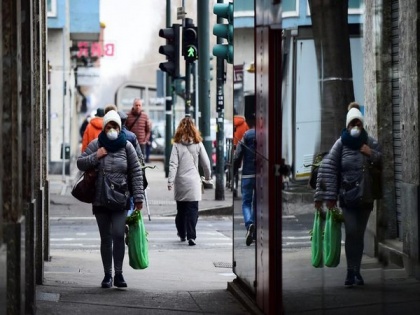Denmark, which imposed lockdown during 1st COVID wave, suffered lower risks of death than Sweden: Study
By ANI | Published: March 27, 2021 07:21 AM2021-03-27T07:21:22+5:302021-03-27T07:30:02+5:30
Denmark, which imposed a lockdown during the first wave of the coronavirus pandemic, suffered considerably lower risks of death than Sweden, which did not impose a lockdown, according to a new study.

Denmark, which imposed lockdown during 1st COVID wave, suffered lower risks of death than Sweden: Study
Denmark, which imposed a lockdown during the first wave of the coronavirus pandemic, suffered considerably lower risks of death than Sweden, which did not impose a lockdown, according to a new study.
The study was published in Proceedings of the National Academy of Sciences (PNAS) of the United States, a peer-reviewed multidisciplinary scientific journal.
In a research article titled: 'Short-term forecasts of expected deaths', Silvia Rizzi, Assistant Professor at the University of Southern Denmark and James W Vaupel, professor at the university, introduced a method to analyse mortality after a major shock which can help in making short-term forecasts of the number of deaths that would have occurred if the coronavirus pandemic or other health catastrophe had not occurred.
"Our method makes short-term forecasts of the number of deaths that would have occurred if the coronavirus pandemic or other health catastrophe had not occurred," the researchers said.
"By subtracting the forecast counts from actual death counts, excess mortality can be estimated. This can be done by age, sex, and other characteristics. The method can also be used for other kinds of short-term forecasting," they added.
The researchers applied the method to assess excess mortality from March to June 2020 in Denmark and Sweden as a result of the first wave of the coronavirus pandemic; associated policy interventions; and behavioral, healthcare, social, and economic changes.
They chose to compare Denmark and Sweden because reliable data were available and because the two countries are similar but chose different responses to COVID-19 as Denmark imposed a rather severe lockdown; Sweden did not.
"We make forecasts by age and sex to predict expected deaths if COVID-19 had not struck. Subtracting these forecasts from observed deaths gives the excess death count. Excess deaths were lower in Denmark than Sweden during the first wave of the pandemic," the researchers said.
"The later/earlier ratio we propose for short casting is easy to understand, requires less data than more elaborate approaches, and may be useful in many countries in making both predictions about the future and the past to study the impact on mortality of coronavirus and other epidemics," they added.
In the application to Denmark and Sweden, prediction intervals are narrower and bias is less than when forecasts are based on averages of the last 5 years as is often done.
Changes in behaviour, such as washing hands more frequently and keeping distance from others, started about this time in both countries, and Denmark mandated the first official restrictions on social interactions.
Denmark and Sweden are ideal for comparing the impacts of these alternative policies because in other respects they are similar, with mutually understandable languages, intertwined histories, related cultures, and comparable political systems: They are two neighbours that keep a close eye on each other.
Researchers forecasted expected death counts by age and sex in an imaginary scenario in which the coronavirus pandemic did not occur and subtracted the forecasted counts from actual death counts between March and June 2020 in Sweden and Denmark, creating a method to assess excess mortality during a health catastrophe. The results revealed that Sweden, which did not enforce a lockdown during the first wave of the coronavirus pandemic, experienced a higher risk of death than Denmark, which enforced a lockdown, according to the authors.
In Denmark, researchers found out that there were 517 excess deaths and 604 COVID deaths. In Sweden, the 6,245 excess deaths exceeded the 5,447 COVID deaths by almost 800 cases. Excess deaths exceeded COVID deaths by 15 percent in Sweden while excess deaths were 14 per cent less than COVID deaths in Denmark.
"In Sweden, either COVID deaths were underreported or lives were lost on balance from other causes as a result of the turmoil resulting from the coronavirus pandemic. In Denmark, policy interventions and behavioural and other changes reduced mortality from other causes by more than the mortality from COVID-19. This merits deeper analysis," the researchers noted.
( With inputs from ANI )
Disclaimer: This post has been auto-published from an agency feed without any modifications to the text and has not been reviewed by an editor
Open in app